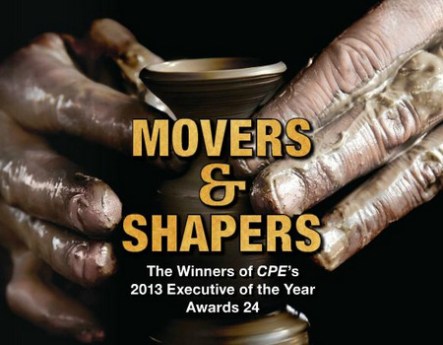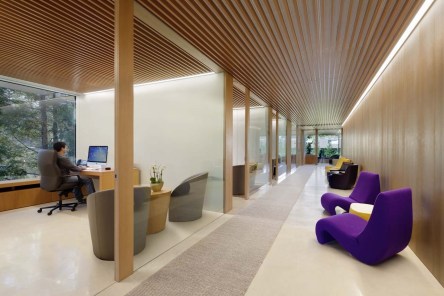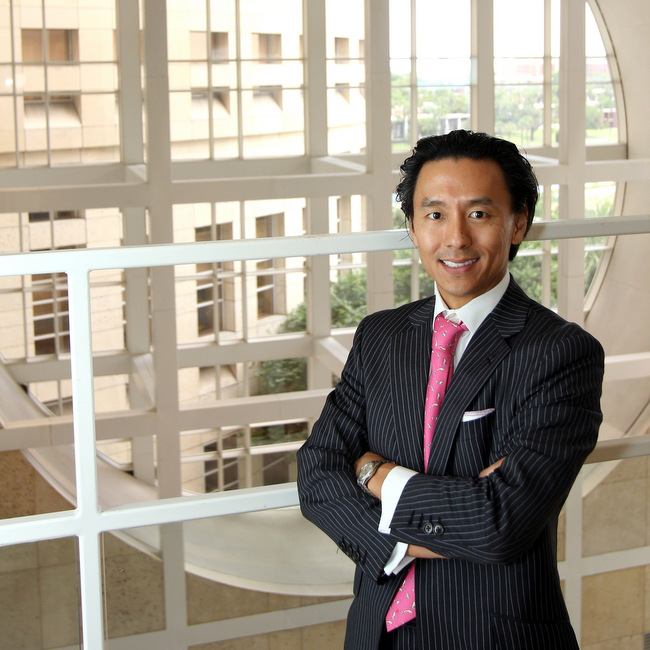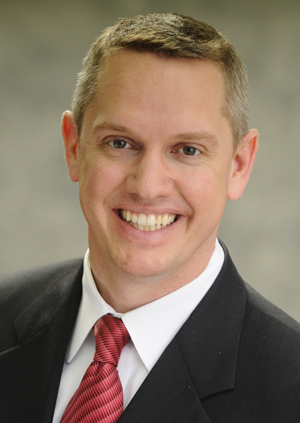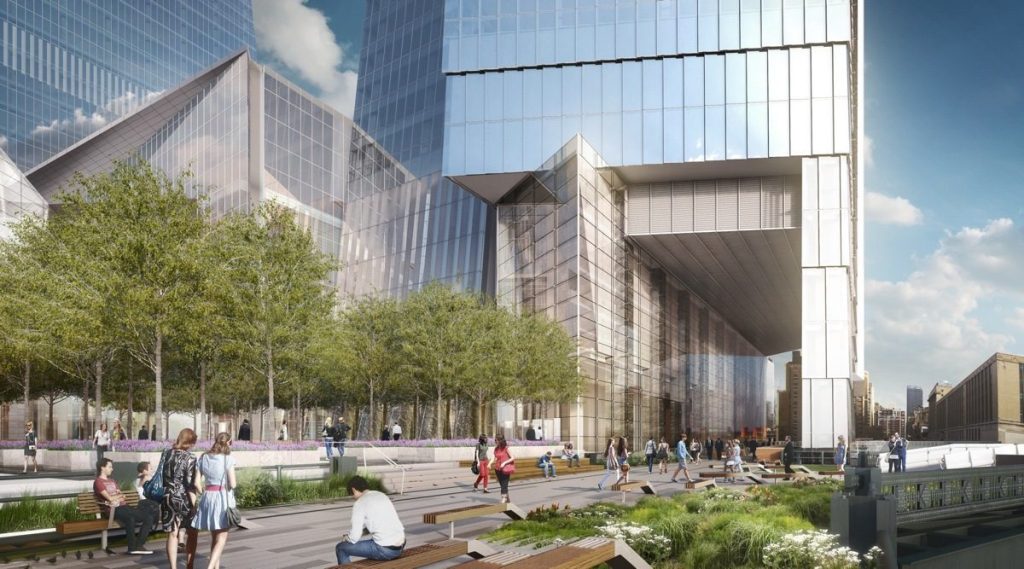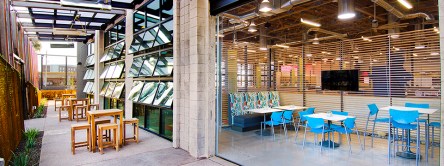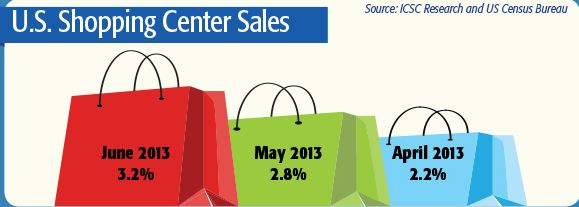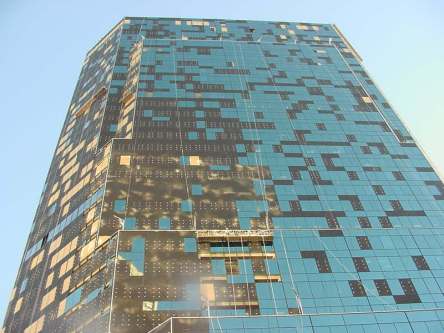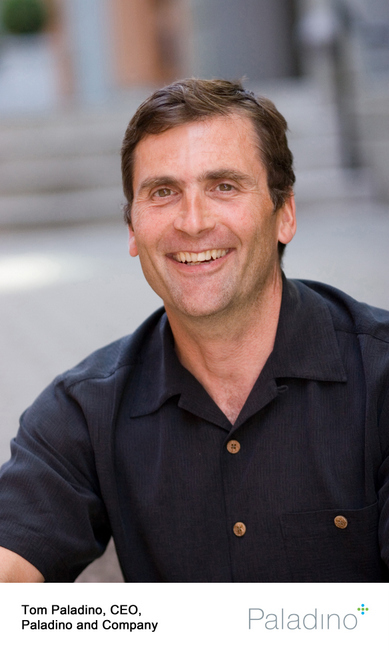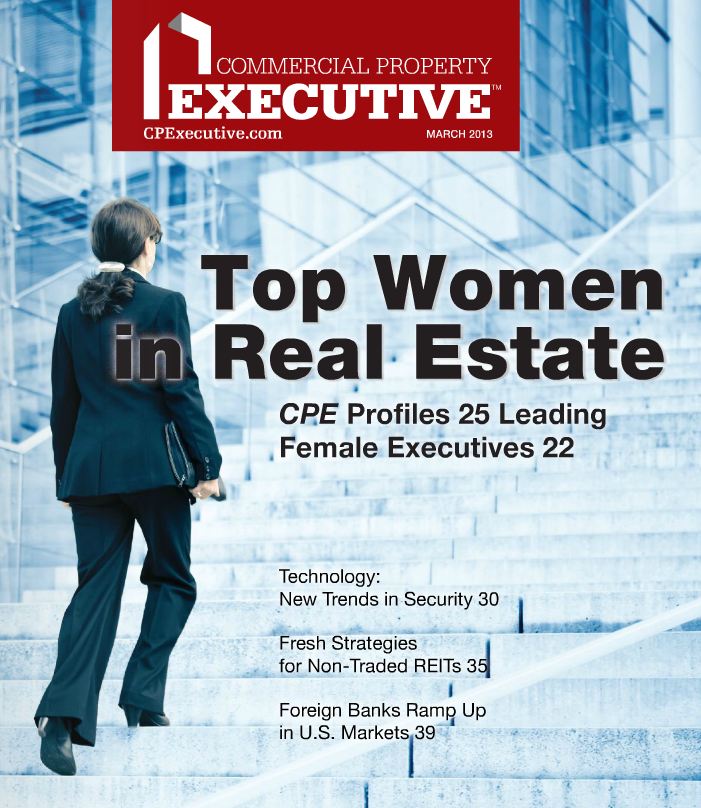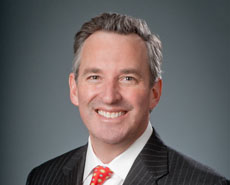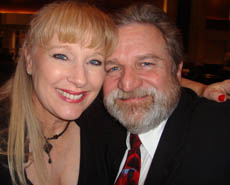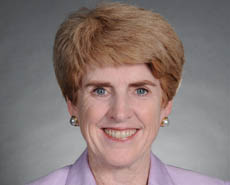Jonathan Gray’s continued fast pace of acquisitions won him top honors in this year’s CPE Executive of the Year Awards. The Blackstone Group global head of real estate was selected as Executive of the Year for the third consecutive year. He was also named the 2013 Investor of the Year. Now in its 17th year, Commercial Property Executive’s annual executive awards program recognizes industry leaders—those who have demonstrated foresight, ingenuity, character, innovation and strategic thinking during the past year. The program is unique in that winners are determined by a peer vote among the leading commercial real estate executives that comprise the CPE 100 executive board. “The awards program has long been respected among executives because of the peer vote,” noted CPE editorial director Suzann Silverman. “It reveals who the commercial real estate industry’s top executives regard as setting an example for success and taking the industry to new levels.” Including 17 categories, the awards feature one Lifetime Achievement honoree but a first place and two honorable mention winners for each of the other categories. Investment seems to be top of mind today, as the two honorable mention awardees in the Investor of the Year category also were awarded in the Executive of the Year category—resulting in an essential clean sweep of the categories by Gray; Nicholas Schorsch, chairman & CEO of American Realty Capital; and Barry Sternlicht, chairman & CEO of Starwood Capital Group. Hines president & CEO Jeffrey Hines also received two first-place awards. Another repeat winner, he was named both the 2013 Developer of the Year and Office Property Executive of the Year. Last year, Hines won honorable mention in the Executive of the Year and Sustainability Executive of the Year categories. The other honorable mention winner to achieve two awards...
The Modern Workplace
Trendy office design
With the rapid development of the green building movement and the integration of tech solutions into all sectors of real estate, we are currently witnessing the rebirth of the modern workplace. White walls and blunt office spaces have been replaced with nurturing environments focused on sustainability, livability and cost-efficiency. Architects, designers and developers are working hand in hand to promote environmentally-responsible construction and have begun delivering innovative products that reshape the way we perceive the world. Spectacular roof gardens, green walls, natural ventilation systems, solar panels and soothing recreation areas have become regular components of the new-generation workplace. On the same note, major employers around the globe are trying to define the right mix of features to drive both people and asset productivity. Beyond social responsibility and ethical considerations, there are many pragmatic reasons why incorporating sustainable practices into a business is a good idea. Investing in green enhancements can produce measurable financial gains such as increased property value and rental rates, decreased operating costs, reduced risk of depreciation and higher attraction and retention rates. Dallas-based Gaedeke Group is strongly dedicated to reducing carbon footprint and has been aggressively pursuing LEED certification portfolio-wide. Gaedeke’s Regency Plaza (pictured, right), a 16-story multi-tenant office building in Uptown Dallas, has achieved LEED Silver certification through the U.S. Green Building Council’s LEED for Existing Buildings program. Among several features promoting sustainable construction and design, the facility earned exemplary performance points for a solid waste management program for durable goods. High tenant participation in Gaedeke’s year-round e-waste recycling days for computers, phones and other electronic devices yielded high scores as did changes to plumbing fixtures, which resulted in a 42% savings in annual usage. Along environmental concerns, the need for digital and more user-friendly technology dictates many of the...
Mukang Cho
In-Rel Properties
Being tied to one city has never been In-Rel Properties’ CEO Mukang Cho’s M.O. Born in South Korea, he lived in eight countries while growing up due to the career of his father, Key-sung Cho, a diplomat who served as the South Korean ambassador to Guatemala, Peru and Argentina. The family’s immersion into Latin America was so thorough that Mukang Cho’s first language wasn’t Korean – it was Spanish. Since coming to the U.S. to attend Cornell University followed by Harvard Law, he’s translated an interest in architecture, passion for business and his top shelf legal education into a successful real estate career. Cho joined the privately held In-Rel Properties in 2010, and has been instrumental in doubling the commercial firm’s portfolio, primarily through the acquisition of distressed assets. “With the broader real estate and capital markets improving, we are seeing fewer acquisition opportunities that come with a significant pricing dislocation, but they do exist,” Cho noted. The narrowing window for such opportunities is due mainly to strengthening retail and office markets around the country, including in Florida, where In-Rel is based. Founded by Charles Stein and Dennis Udwin in 1985, In-Rel now manages 6 million square feet of office and retail property in seven states. Cho explains that the company focuses not on markets, but on individual assets, when making purchasing decisions. “We really start with the asset itself, and try to create a thesis that this is an asset we want to own and operate. Once we make that determination, at the asset level, then we get comfortable with the submarket and market that the property is in. Unlike a lot of companies that take more of a top down approach, first identifying where they want to be, we take the inverse...
Next Gen Design
Student-Inspired Ideas for Buildings + Cities
Commercial developers are seeking fresh new insights—and in some cases, designs—from the next generation of creative thinkers: students. Developers of small towns and established institutions are looking past architects and into the untested waters of university classrooms. Student-inspired development has become more common throughout the nation, with good reason. To many observers, American architecture had become stale, lacking the creativity seen in other leading nations. The high costs did not yield the cutting edge buildings developers yearned for. In response, educators across the US shifted their focus, intensifying emphasis on innovation and good, old-fashioned out-of-the-box thinking. As an indirect result, universities soon became the place to seek fresh insight at a very affordable price point. Youth has become a unique asset. Creativity flows unhindered by status quo or past disappointments. This generation has also been shaped by rapidly-changing technologies, boundless research opportunities, and an atmosphere that promotes sustainability and resourcefulness. Students have become the ideal inspiration for those who are looking to develop their business, institution, or city on a budget while tapping into the mindset of the future. Montana State University architecture students joined forces to help Big Horn County Historical Museum and Visitors Center recreate its image. Students created displays for the museum, designed a new logo, created murals, and organized a cross-referencing system that would make navigating the ground’s nearly 30 historic buildings more manageable. “The students inspired us to do so many things,” says Diana Scheidt, museum director. Interest in the museum has spiked, particularly due to the students’ model replica of Fort Custer which disappeared nearly a century ago. The young adults brought it back via plenty of research and a nifty 3D printer. School of Architecture students at the University of Notre Dame were called upon to help with future development plans for South Bend (left). South Bend leaders become interested in capitalizing on the group, hoping to reinvent the area as a retail and dining destination for students and visitors alike. To complete the project, the student team studied 11 successful college towns in the US before presenting ideas to community officials and residents. Proposals included the addition of mixed-used facilities with budget-friendly housing, more shops and cafes, and expanded roadways to promote pedestrian traffic and cycling. These projects would help link the isolated university to the nearby town, encouraging economic and social opportunities to flow in both directions. Jitin Kain, director of planning for South Bend, has announced that developments in the downtown area are already in progress. While university students can offer unique insights, the cost effectiveness of their services undoubtedly plays a role in their value. Student projects save cash. Tweaking an amateur project may prove to be more economically savvy than purchasing a design from an established firm. Mayor and trained architect Gavin Harris sought the help of students to create development and expansion plans for the town of Ruthin (right), located in North Wales. His decision was made two fold. Primarily, students are the visionaries of the future and he wanted to ensure that his town would appeal to future artisans and tourists. Secondly, student designs fit the town’s modest budget. “If we had not done it this way, we would never have been able to afford it. A private practice would charge £40,000-£50,000,” he said in an interview with BBC News. The student-led initiative cost less than £5,000. Urban SOS, a student competition sponsored by AECOM and hosted by American Institute of Architects NY, tackled resident issues this year. With the intent of vanquishing the slums, finalist teams focused on a suburb of Ciudad Juarez, the Kiberia neighborhood of Nairobi, and inner Bogotá. The Kiberia team won, taking home $5,000 as a grand prize. They were also awarded $25,000 toward making the project a reality. The neglected neighborhood certainly did not have the funds to propel its own renaissance. Through student award money and free project...
Rx for MOBs
Strong Property Managers
As the population continues to age and more medical office buildings come online in response, demand for management services is expanding. But this is not your typical commercial property management. Owners, operators and managers must be able to adapt to a rapidly changing environment. “The healthcare landscape is changing all the time, technology is changing all the time, needs of office space are changing all the time,” noted Christopher Merrill, president & CEO of Harrison Street Real Estate Capital. Healthcare and seniors housing assets account for about 50 percent of the company’s portfolio. This year alone, 10.3 million square feet of new medical office buildings will come online, a 2.5 million-square-foot increase compared to 2012, according to a study released in late May by Marcus & Millichap Real Estate Investment Services Inc. By 2016, demand for medical office buildings will increase by about 20 percent, according to an estimate by the Urban Land Institute; demand for space will increase by 64 million square feet during the next decade. Today’s new breed of medical office buildings is characterized by designs that promote efficient use of space, data sharing and improved interaction between medical staff and patients. End users are gravitating toward this newer product, a preference that is skewing leasing trends. Medical office facilities completed since 2007 have rung up about 8.3 million square feet of positive absorption during the past year. MOBs built before 2007 have fared considerably less well. As of the first quarter of 2013, pre-2007 MOBs had sustained negative absorption in six of the past eight quarters, Marcus & Miillichap reported. As with other property categories, management strategies for healthcare facilities vary widely. Health Care REIT Inc. manages its 1,133-property portfolio of healthcare and seniors housing in house. Other investors, like...
John Crossman
Crossman & Company
John Crossman has taken a career in commercial real estate to exceptionally contributive heights. Not content to focus solely on the success of the company he helms, the 42-year-old Floridian takes the time to speak to college students, volunteer and fundraise for non-profit and social justice causes, and all the while maintaining a focus on faith and family. In one of the online videos in which he is featured, Crossman explains his philosophy: “Some people have a perspective that if you’re a leader, you’re a king. You put a crown on, and people serve you. I remind myself that in my leadership, I’m a servant. Staying focused on serving my clients and serving my employees, serving the industry and serving Florida State, that’s my lot in life.” It sounds like a full plate, but Crossman has an impressive legacy to maintain. His father, the late Rev. Kenneth C. Crossman, was a Civil Rights leader influenced by Martin Luther King Jr. Growing up in a home where education and service were strong values was a major influence on Crossman, who has brought those principled practices into his real estate business. “There are lots of reasons to do it, but I feel morally obligated. If we weren’t helping out in the area of education within our industry, we’d really be doing something wrong,” he said in a recent interview. Yardi client Crossman & Company, co-owned by John and Scott Crossman, is a major retail leasing, management, development, and marketing firm in the Southeast, with over 20 million square feet of inventory in Florida, Georgia, Alabama, South Carolina, North Carolina and Tennessee. Since leaving Trammell Crow in 2006 to partner with Scott, Crossman has focused much energy on educating the real estate leaders, both of the present...
Healthy Luxury Living
Related Companies
For those familiar with the industry, Yardi client Related calls to mind images of grandeur: a wildly successful company that constructs towers that tickle the clouds of America’s most desirable cities. Related has come to embody the upper echelon of commercial and residential development. Without missing a beat, the company is also promoting health as a notable characteristic of the brand. Related’s nationwide, smoke-free housing policy turned heads this summer. The nation’s largest privately held real estate development firm raised the bar by converting every property in its portfolio into a clean air haven. The conversion, estimated for completion within a few years, is the first of its kind in the US. The development of the Hudson Yards megaproject adds another gem to the crown of Related’s healthy living plan. The site in the New West Side, as the neighborhood is being called, demonstrates grand scale gentrification of Manhattan’s water-front. Ultra-luxury goods and services will abound around the complex. Upscale shopping, world-class dining, and housing that offers breathtaking views of the city are only the basics of the project. Related’s sustainability efforts set this development apart from others of its kind. The towers will boast an energy efficient envelope for optimal climate control. Their ventilation design promotes natural air circulation. Hybrid heat pumps and fan coils offer cost-effective heating and cooling systems that put less stress on the power grid than their traditional counterparts. Interior spaces that cater to natural sunlight will boost the moods of residents while on-site power ensures that occupants can enjoy business as usual even in the midst of natural disasters. Energy efficient fixtures, appliances, and finishes top off the design plans. Related strives to provide eco-friendly and health-conscious facilities without sacrificing comfort. For more on the residential smoking ban and the Hudson Yard’s development, see Healthy Amenities: How to Walk the ‘Green’...
Project: Diversity
Focus on professional development
At a time when commercial real estate faces fierce competition for the best and brightest, forward-thinking companies understand that diversity is vital to their success. “They need smart, talented people, because this industry isn’t getting younger; it’s getting older,” argues Gregg McCort, executive director of Project REAP, a real estate training program for minority professionals. Nevertheless, characteristics that marked commercial real estate for much of its history—it is largely family owned, male and white—pose deeply embedded challenges to change. Project REAP estimates that members of minority groups—among them African-Americans, Hispanics and Asian-Americans—account for only about 1 percent of commercial real estate professionals nationwide. Further complicating efforts to broaden the industry’s talent pool, job reductions during the Great Recession decreased opportunities across the board and caused promising candidates of every background to set their sights on other careers. Educational programs are providing avenues for talented minority professionals to enter the industry. Project REAP—the acronym stands for Real Estate Associates Program—sponsors a number of training programs that each draw several dozen young minority professionals. So far, it has organized sessions in New York City, Cleveland and Los Angeles, and a debut program in Dallas is on the radar for 2014. Backed by a broad coalition of companies and industry associations, the program attracts a variety of professional backgrounds and often those with advanced degrees. University programs, too, are important conduits. At the University of Southern California, the Ross Minority Program in Real Estate trains participants to work in development in underserved communities. More than 700 people have completed the program since 1993, which is expanding into San Diego this fall, and its alumni are having an impact on their communities. Vanessa Delgado, for instance, heads the development team at Los Angeles-based Primestor Development Inc., which specializes...
Green Office Design
Enhancing the office environment
A new generation of highly-efficient buildings, focused on carbon reduction and livability, demonstrate that smart living calls for tech and green combined. The green building movement is not limited to new construction projects; green principles can be easily incorporated into existing environments as well by overhauling interiors, using eco-friendly materials and supplies, and educating on green practices. Installing solar panels and occupancy sensors, putting in better insulation, using energy star-rated appliances or energy-efficient light bulbs are only a few of the improvements that property owners can make in order to green their offices without building from the ground up. DPR Construction, a national technical builder specializing in highly complex and sustainable projects, has achieved net-zero energy consumption in its Phoenix Regional Office, a 40-year old building located in the Discovery Triangle. The outfit has been officially certified as a Net-Zero Energy Building (NZEB) by the International Living Future Institute (ILFI) through its Living Building Challenge (SM) program, making it the largest building in the world and only the second in the United States to achieve NZEB certification to date. “Net-zero is possible, even in one of the most extreme climates in the country,” said Dave Elrod, Regional Manager, DPR Construction. “We purposely chose a building that was nearing the end of its intended life cycle in a redeveloping area to show our commitment to Phoenix and to demonstrate the impact revitalization can have on an urban environment. This building is another proof point of our ability to walk the walk of sustainability. Our Phoenix office will be a ‘living lab’ where anyone can see firsthand how our sustainable technologies work together in real life.” Among several outstanding enhancements, the high-profile office building includes operable windows that work in tandem with the energy monitoring system...
Managing Roles
Property & Asset Management
Industry trends are changing the dynamics between the asset and property manager. As the owner’s representative, the asset manager still has the final say in the property’s strategy, while the property manager is on the front lines for tenant relations, accounting, maintenance and other daily tasks. But the asset manager’s workload has expanded since the recession, forcing more reliance than ever on the insight of frontline managers at individual properties and blurring the lines between the two roles. To ensure effective interplay in this new world, the property manager must be knowledgeable about the property and able to impart whatever information is needed. That way, the asset manager can talk to one person at the property level and obtain the answer to any question that comes up—without being handed off to someone else on the team. Indeed, communication is critical. For most owners, the monthly conference call between the asset manager and the property management team is the fundamental communication tool. But the workload of many asset managers also enters into the equation. Given the expanded workload of many institutional asset managers, making sure they get adequate information is a constant challenge. When the monthly conference call alone falls short of keeping the asset manager in the loop, the real estate manager should take the initiative to pick up the phone and call them. Face time is also important, with two asset manager visits a year at minimum to ensure adequate focus on the property. There is no such thing as meeting too often, even with phone calls and emails in between. That applies even when both responsibilities are carried out by in-house team members. And communication is never more important than when problems come up. Indeed, property managers must be willing to bring...
Shopping Snapshot
ICSC Infographic
You may have heard that Americans now do all of their shopping online. But it’s too soon to write shopping off as a national pastime just yet. In fact, shopping centers across the nation are seeing steady increases in sales this spring and summer, benefiting the economy. Jobs at the mall are also up. And in the good news category for commercial real estate companies, net operating income for shopping centers showed a steady upward trend in Q2 2013. These observations are culled from a dynamic infographic from the International Council of Shopping Centers (ICSC), shared below. What are shoppers spending more of their money on this year than last? Groceries, jewelry and home furnishings lead the way. Have you been spending more time at the mall this year? Are leasing conditions strong in your local retail market? Thanks to the ICSC blog for permission to share this...
The Brick Companies
Conserving Nature, Creating Community
The Brick Companies (TBC) upholds a longstanding history in the DC area. What began as a brick and terra cotta pipe manufacturer has turned into a staple in commercial, residential and recreational real estate management. As the company continues to grow, responsible development and community involvement serve as pillars for a promising future. Promoting Healthy Communities Shelly Ford is the Head People Person and Chief Responsibility Officer of The Brick Companies, a Yardi client. “We are passionate about our Good Works,” Ford says. “We’re committed to giving back to the communities in which our businesses operate.” There are many ways that TBC reaches out to its communities. In addition to providing grants to like-minded charitable organizations, the company also provides a matching gift program for its employees. Employees’ cash donations and volunteer hours are able to make a larger impact. The Brick Companies continually develops sustainable practices as a way of protecting and supporting local communities. As of July 2013, TBC’s Maryland properties, including six commercial office buildings, two golf clubs and two marinas are powered 100% by “Clean Steps” WindPower from Washington Gas and Energy Services. The purchase of approximately 11.5 million kWh of wind power will help reduce greenhouse gases and is equivalent to taking more than 1568 cars off the road for one full year. The offsets helped the company reach its 12×12 goal. “Last year we finished up our 12×12 program where we were committed to reducing our energy usage across our entire portfolio by 12 percent by 2012—that was accomplished,” cheers Ford. Alternative energy also powers the company’s unique property, Queenstown Harbor Golf Course. “We’ve installed a solar electric system at Queenstown Harbor Golf Course that produces 70 percent of the electric usage at our clubhouse and cart barn. 800 ground-mount panels generate 230 megawatt hours of electricity annually. That’s the equivalent of 159 metric tons of carbon dioxide a year avoided,” says Ford. Green efforts at Queenstown Harbor have not gone unnoticed. The golf course received the Environmental Leadership in Golf Award this year. Both Atlantic Marinas have also been recognized by the Maryland Clean Marina program. TBC also focuses on waste reduction, minimizing the amount of trash that fills local landfills. “We’re encouraging ourselves, our tenants, and our employees to participate in the 50/50 program in which we will aspire to have over 50 percent of our trash recycled,” Ford says. Ford wants to look at the dumpster outside of the headquarters building and see that more than half of the office waste is in the recycle bin. The idea spread beyond the headquarters, appealing to employees who want to do their part for the environment outside of the office. Integrating sustainable practices into the office culture has proved easy enough for the company. Many employees participate because the environmental challenges are fun and rewarding. The headquarter’s green roof, for example, is a spot that encourages spirited competition. Many contests are lighthearted; “Some of the events are strictly for fun like our bubble blowing contest or the putting competitions on the miniature green,” says Ford. Other competitions serve a broader purpose. “We have a competition going right now where we have earth boxes on our patio. Employees have planted their own vegetables. At the end of the season, everyone who grew vegetables will cook a dish for the rest of the employees using the vegetables that they’ve grown in the earth boxes. Then we choose a winner. It gets pretty competitive,” says Ford. In addition to fostering a community atmosphere within the office, the cook-off serves to remind employees of the possibilities of urban gardening and the pride that can come from supporting local markets. No one is complaining about the home-cooked lunches, either. “Last year’s tomato growing contest was a lot of fun,” says Ford. Tomatoes were judged based on size, sweetness, and overall taste. All tomato growers then prepared a...
Risk Management
Minimizing property damage
Business operations are subject to numerous internal and external risks, including severe weather, which could result in damaged goods and significant financial distress. How managers and property owners prepare ahead of time can entirely alter the course of an event. While hurricanes, fire and other natural calamities cannot be prevented, we can be proactive and minimize potential damage. History teaches us that preparedness is key in many instances; staying informed, knowing your vulnerability and having a plan at hand can make all the difference should disaster strike. Get your property development right by reading these words of wisdom, courtesy of American Restoration, a specialty contractor and reliable partner in the building remediation industry: Review your Emergency Action Plan, making sure it is accurate and up to date. Perform regular maintenance; this is the most practical and economic form of preservation. Review your insurance policies to determine if you have adequate flood and wind coverage. Inspect roofs and flashing to ensure they are properly secure including antennae, signs etc. Trim trees and shrubbery with safety in mind, not just curb appeal; during major storms, it is not uncommon for buildings to suffer a great deal of damage due to trees falling on low-rise structures or breaking windows. Inspect your property and surrounding areas for loose debris (i.e. construction, repair in progress) to ensure supplies, tools and trash are properly secured. Add pre-authorized damage mitigation program to your Emergency Action Plan. “We all empathize with the people of Oklahoma experiencing the loss of life, destruction of personal property, and the arduous recovery process,” comments Jim Teters, General Manager at American Restoration. Moore, Oklahoma was hit hard by a recent tornado. An estimated 1,150 homes were lost, 24 people died, and $2 billion in damage was incurred...
Daytime Cleaning
Commercial energy savings
What began as a small push from eco-conscious businesses has become a cost effective movement that is sweeping Europe and North America. By switching to daytime cleaning services, businesses are experiencing multitudinous benefits. Still, most businesses are not thrilled about the idea: will the activity cause a disruption in the workplace? Will employees be distracted by the noise? While all valid concerns, a better understanding of how daytime cleaning works can eliminate worries. How it works For starters, no one will ask your clients to lift their feet so that the vacuum can pass under. You should not choke on floating dust during an intense sales call, either. The cleaning staff simply starts emptying trash cans, cleaning restrooms and other relatively quiet tasks during the last few hours of business. Once most employees are gone, the heavy duty work begins. Starting maintenance a few hours earlier permits the cleaning crew to leave the business earlier. The monetary savings come when cleaning tasks overlap with regular business hours. Tony Guzzeta of ABM Janitorial Services explains, “One of the biggest uses in the building is energy. If you could conceivably do some cleaning while people are at their jobs, you cut the end result time down and again, it saves money.” The lights and air conditioning, for example, are already running. There is no need to consume more energy for several hours after the business has closed so that the janitors can work. “There are about three fewer hours at night that the lights would be on, which would save you between nine and ten cents per square foot” says Rick Needham, General Manager of 10 & 120 S. Riverside Plaza. For larger businesses, the savings are more impressive. The California EPA building saved nearly $100,000...
Black Oak Associates
Spearheading sustainable
For Black Oak Associates, sustainability is a means of providing tenants with affordable commercial spaces while offering local residents a cleaner, healthier community. Black Oak Associates has adopted a policy of sustainability that applies to the corporate office and its properties. Heberto Alanis specializes in the company’s green initiatives: “We believe that sustainability is a really good strategy. It promotes value, drives returns, and defines our organization,” Alanis says. “It will be an ongoing strategy for us that will help the community and our tenants.” Black Oak has approached green building as a two tier endeavor, considering the needs of its tenants as well as the needs of the communities in which Black Oak properties are located. The site of Eldersburg Commons, for example, had been an eyesore for years. During the hardest times of the recession, tenants vacated the shopping center, leaving the 330,000 square-foot building as a concrete shell. Black Oak soon stepped in with plans to reinvent the site as a thriving community center. “It is brownfield land that we are developing, which in itself is a green project,” explains Alanis. “We’ve been meeting with the architects and finding ways to integrate LED lighting, TPO roofing, and exploring our solar options. We will make use of more efficient HVAC units and energy saving programs to power the building.” Once the green upgrades are in place, the shopping center will welcome its tenants. The project has piqued interest from many retailers. WalMart will serve as the shopping center’s anchor. Additional vendors will be selected with local residents in mind; Black Oak has reached out to residents to determine what stores and restaurants they would like to have in the center. The company established a Popularise page that allows residents to leave feedback...
Evolving E-Commerce
Impact on real estate
Today’s retail market is something of a “living” sector, seemingly in a state of constant change as manufacturers and retailers learn to harness ever-advancing technology to attract and retain customers. Over the years, advancements have led to a variety of concerns, some of them significant: The growing popularity of online shopping has at various times fanned real estate owners’ fears that demand for bricks and mortar would wane. Retailers have feared a loss of turf to e-tailers, in particular Amazon and other mega-players. Consumers have feared invasion of privacy as their preferences are recorded and targeted in minute detail. All are valid concerns. But like any advancement, over time technology has also brought brand awareness, better customer service, greater convenience—even a competitive edge. And the refinements keep coming. As the speed of e-commerce increases, the types of technology needed to meet higher expectations grows ever more complex. Same-day delivery of consumer and business goods is one new wrinkle. Once limited to local delivery in big cities (Barnes & Noble has long offered the service in New York City, for instance), this trend promises to spread in the not-so-distant future. But with volume and distance come complications: Extending the reach and volume of same-day service demands new types of machinery and new sorting capabilities—and that presents a challenge not just for the machine manufacturers and logistics providers but for the property owners, as well. In fact, the new machinery requires a variety of changes in space: more complex internal layouts and technical capabilities to accommodate the machinery; larger mezzanine areas with higher clearance for packaging and other back-office tasks; greater life-system components ranging from lighting to HVAC to parking to fire protection because of an increased employee presence. The warehouses, though necessarily more locally based...
Green Design
Quantifying business returns
The concept of sustainable design is taking significant steps forward, according to one expert, but it still has a way to go. While efforts are expanding into the planning stages and incorporating operations and asset management as well, hard data evidence of results are still missing, affirms Tom Paladino, founder of consulting firm Paladino and Co. Without that data, most developers are treating new-construction efforts on a one-off basis rather than taking a more programmatic approach to sustainable construction. Certification programs are both proliferating and expanding, offering more options to put an official seal of approval on local materials, efficiency measures and other improvements. And research is picking up, too, for instance through the Greenprint Foundation, which is collecting data from a growing number of companies to track carbon emissions, with some very lofty goals for the industry at large. But those efforts are focused on cleaning up the environment, Paladino notes, who was instrumental in developing the U.S. Green Building Council’s Leadership in Energy and Environmental Design certification program, directed its pilot program and has been technical editor and author of the version 4 reference guides. While environmental improvements are certainly a worthwhile pursuit, nobody is really studying property performance to determine the best business results. For instance, while the industry can measure a leasable area, opinions differ on specifics that combine to create a daylit building that contributes to productivity gain—let alone can they precisely measure what that productivity gain is. The result is that only a few developers are approaching application of sustainable design in multiple projects systematically, with business performance goals in mind. Expansion of the sustainability team might help further those tracking efforts. While there are 200,000 LEED APs out in the market now, there are few other types...
Finding Inspiration
Top Women in Real Estate
It’s inspiring to hear the details of a success story, and never more so than when the person had to fight their way to the top. Talk to a female executive in commercial real estate, and chances are you’ll walk away with more than a few such inspirations. Talk to 25 of them, and you’ll be overwhelmed with good ideas, advice and insights. And regardless of whether you’re male or female, you’ll want to put them to use. Needless to say, finishing up work on Commercial Property Executive’s March 2013 feature, Top Women in Real Estate, I had more new ideas than I knew what to do with. OK, true confessions, we didn’t talk to all 25—a few were so busy we never got them on the phone. But most made themselves available, and their stories provided a lesson in perseverance, ingenuity and dedication. While these traits might be expected of such a group, some less likely characteristics also emerged during the course of our interviews. Among them was what seemed an unusually prevalent (though not omnipresent) tendency toward self awareness, an ability to recognize and admit to strengths and weaknesses that doesn’t always survive the climb to the top rungs of the career ladder. Beyond the admission, it was evident in an expressed willingness to listen and communicate, as well as to identify and emphasize the best characteristics of their team members. With self awareness can come humility and even insecurity, and while that latter trait might not seem a natural fit for aggressive dealmakers, two of the most successful brokers in New York City, Mary Ann Tighe of CBRE Group Inc. and Tara Stacom of Cushman & Wakefield Inc., admitted to it—and illustrated how they put it to good use. Another top-ranked...
Shorten the Leasing Lifecycle...
Yardi Commercial CRM
Commercial clients attending this week’s Yardi Advanced Solutions Conference in Santa Barbara can focus on maximizing business efficiency when selecting from a comprehensive track of classes. One of many exciting new lead and lease focused applications from Yardi Systems that will be introduced is Yardi Commercial CRM™, which offers commercial real estate professionals the ability to streamline and even shorten the leasing cycle. Cutting down the time spent on property lease up is crucial for commercial property owners and leasing professionals in order to enhance revenues and minimize unit turnover time. Kim Maddox, Commercial Product Specialist for Yardi Systems, explains how you can save the carrying cost of vacant space by shortening the leasing cycle. “For example, let’s say you rent on average 2500 square feet at $37 per square foot. If you shorten the leasing cycle by three weeks for one lease, you will accelerate $5,336.54 of additional rental revenue on that lease. What factors will help reduce the cycle time? Examples include saving a leasing agent’s time, easy access to information (available space, existing leases, encumbrances, budget, prior rent and market rent), tenant communication logging, tracking activities and events, facilitating proposal generation, counter-proposals and approvals, facilitating lease drafts and approvals, facilitating floor plan generation and approval, facilitating transmission and approval of construction documents, construction budgets and facilitating tenant build-out. There is much to be gained through the use of an integrated system to accelerate this process,” Maddox said. Among the features of Yardi Commercial CRM: Prospect and customer contact information is centralized in Yardi Voyager™ and contact history is tracked throughout the leasing process, from first contact to final signing. Integration with Microsoft Outlook and Yardi CRM Mobile means you need never be out of reach of key client data. Automate the...
Jennie Kirby
Kirby Property Management
As the owner and principal broker of a full service property management firm in Lafayette, Indiana, Jennie Kirby has insight into every sector of real estate in her Midwestern hometown. She and husband Aaron, associate broker, work with all types of real property at Kirby Property Management, from shopping centers to student apartments to single family homes to storage units and even fraternities. Their dedication to personalized service and client satisfaction has allowed them to grow their business quickly. And as a result of the hard work, last month the Kirby team was honored by the Greater Lafayette Chamber of Commerce as the Small Business of the Month. Working with four employees, Jennie and Aaron Kirby manage 35 single family homes, three shopping centers, a self-storage facility and the Sigma Nu fraternity at Purdue University. They also handle leasing and sales for commercial and residential, and tenant advisement. What binds all these sectors together? A need for quality customer service, which is one of Kirby Property Management’s focal points. “Really helping people find a home or a location for their business, representing tenants in any way shape or form is my favorite thing. I love to see the reaction they get when they finally get the lease signed and there’s that sense of relief that it’s done and they can make that next step in their life and move forward, whether it be with a business or a residence. That’s really a refreshing thing for me,” Jennie Kirby said. Delving into so many different real estate sectors certainly has its challenges, especially when it comes to maintenance. “Nothing’s ever the same – every day it changes. We don’t know if we’re going to be hanging a picture for a residential tenant or fixing a...
Getting to the Future...
Corporate tenants, changing needs
Executives making long-term plans face an interesting juxtaposition: Significant changes lie ahead, but at the same time history is sure to repeat itself. How best to handle this? Move cautiously, but stay open minded and don’t be afraid to try new things. Never has the industry faced as many big changes simultaneously as those coming down the pike. The creation of the real estate investment trust vehicle, the advent of commercial mortgage-backed securities, the introduction of 1031 exchanges—certainly, all these and other big changes have had an impact on the market. But in the Digital Age, change is advancing ever more rapidly and is layered together with sustainability pursuits, new corporate office preferences and changing demographics. Technology by itself represents a big cog in the advancing real estate industry machine. Broadband and wireless communications capabilities and programs to track and analyze operations are only in their beginning stages—and represent only a portion of the possibilities that will impact workplace, housing and consumer venues. A new study published by CoreNet Global predicts that technology will soon be able to adjust the temperature, lighting, sound and other aspects of the workplace to the emotional state of its occupants. Elements as non-technological as the fire extinguisher may be monitored via an embedded microchip. And the U.S. General Services Administration is now mandating that its property managers receive information technology training. On the sustainability front, efforts are now focused on how to analyze all the data being collected on energy use, as well as ways to make small changes in operations that will have a big impact, according to Marc Heisterkamp, director of strategic assets for the U.S. Green Building Council. Municipalities are striving to determine methods of incentivizing greater compliance among property owners within their communities, while...
Dave Woodward
CompassRock Real Estate
From his high-rise office in downtown Denver, Dave Woodward has a great view of the snow-capped Rocky Mountains just beyond the Mile High City. He’s also taking the long view with his new company, CompassRock Real Estate. Formerly the CEO of the Laramar Group for 12 years and prior to that a senior vice president at Archstone, UC Berkeley grad Woodward has spent his career as a property management executive. He’s now using those years of experience in a new firm that focuses on properties from special servicers, lenders and other institutional owners. “One of the things that’s really exciting for me is that CompassRock isn’t just a multifamily company, we are providing property management and other services to all real estate product types.” Dave told us. “CW Capital is my initial financial partner, with six other clients also signed up. They will help by contributing some of the management assignments in their portfolio.” The initial portfolio will be comprised of distressed assets, mostly taken back through foreclosures. In some cases, CompassRock will also be stepping in as court-appointed receiver while the properties work their way through the foreclosure process. Generally a two to four year window to maximize values, clean up the assets and position the properties for sale is common. “Our plan is to manage a lot of these properties and then retain management when possible upon sale. In addition, we’ll be managing for longer-term owners as well.” Dave explained. His business model at CompassRock will maximize efficiency with two key best practices he’s identified over the years for cutting down costs: -A shared services system for back office human resources, accounting, information technology and risk management will streamline those functions across all management categories. -Outsourcing some lower-level services, such as monthly...
Joanne Massey
Sundance Square
Joanne Massey is the controller for Sundance Square, the renowned Fort Worth property management firm owned by the Bass family that controls 35 city blocks of the city’s downtown core, including numerous historic buildings, and is considered one of America’s most successful urban revitalization efforts. But her interest in cool stuff from the past doesn’t end when she leaves the office. In her free time, Joanne and her husband Robert enjoy shooting vintage lever action guns – “the kind that cowboys used to shoot” – in Cowboy Silhouette competitions. She’s reached the AAA level in many of the competition categories, which is no surprise when you learn that she’s a former national-caliber archery athlete. She got into Cowboy Silhouette after reconnecting with her husband, a college sweetheart whom she married four years ago. He was attending competitive rifle and shotgun events, so she tagged along. The Omaha native is also an avid golfer who hits the course several times a month. “I won’t go and just sit, that’s too boring,” she told us. While attending college at Texas Christian University, she was the top female collegiate archer in the state of Texas, and ranked in the top 10 nationally. Though the U.S. team selection process for the 1980 Olympic Games didn’t go in her favor, she has fond memories of her archery days. Joanne is also right on target with her career at Sundance Square, where she rose up through the Bass corporate accounting office to head up the accounting team for Sundance and oversee numerous major software transitions. Her team initially ran two high-rise office towers, then merged with another Bass-owned operation to form Sundance Square that oversees all of the downtown properties. She loves her job. “Being in a property management office,...
Lucy Billingsley
Billingsley Co.
Lucy Billingsley’s distinguished career in real estate development ranks her among the nation’s leading female industry executives. In the fourth decade of her career, she maintains great passion for the next project to command her attention. “My favorite deal is always the next one,” she told us during a recent interview. Billingsley Company, the Dallas-based company with land, office space, industrial, retail, single-family, multi-family, mixed-use and master-planned developments that she and her husband Henry founded in 1978, is flourishing. New phases of 10,000 unit master-planned rental communities The Neighborhoods of Austin Ranch and Cypress Waters are currently underway, and Billingsley is excited about changing the face of the multifamily experience. The company is also expanding its office and industrial holdings. Billingsley also devotes much of her time and energy to charitable work, and her philanthropy has included The Chiapas Project, Grameen Foundation USA, Women for Women International, National Geographic Society Council of Advisors, World Affairs Council (Dallas), Brain and Creativity Institute at USC, Council of Foreign Relations, The Hockaday School, and The Hunter and Stephanie Hunt Institute for Engineering and Humanity Advisory Board. In a short conversation, she filled us in on few views of the current marketplace, how she chooses philanthropic causes, and the lessons that her father, famed developer Trammel Crow, imparted to her. TBS: It’s been a challenging climate for real estate sales, investment and development over the last several years, although Texas come through the down economy very strongly. What do you see as the most pivotal focal points for property executives as the financial climate nationally continues to improve? LB: I think the multifamily world is a world that has made a significant and permanent shift in its role in America today – the shift is because the American...
Redefining Residential...
Luxury in multifamily
Yvonne A. Jones has had a long and accomplished career in commercial real estate. Currently Managing Director of Asset and Property Management at Chicago-based McCaffery Interests, Inc., she’s also serving as President-Elect at IREM Chicago, Chapter 23. Recently The Balance Sheet had the chance to talk to Jones about her new foray into the residential sector, which is new for her. She spent almost nine years focused on the management, leasing, acquisition, disposition, and financing of commercial real estate assets at Zifkin Realty Group, LLC. At McCaffery, she’s overseeing mixed-used projects like the Roosevelt Collection in Chicago’s South Loop, which the company acquired in June of 2011. (The development was initially constructed in 2007 by Centrum Properties.) McCaffery is changing the layout of the project’s 440,000 square feet of retail space and creating a vibrant community mixed use space for residents and shoppers to enjoy. The shopping center is anchored by the popular Kerasotes ShowPlace movie theater, one of the nation’s top three theaters. Dan McCaffery, CEO of McCaffery Interests, is considered an industry and market leader in creating Class A living experience for residents of his company’s multifamily properties. His early projects, like The Bernardin, reflect a unique concept of high-end luxury living that residents adore. “His idea and his concept at the time was to really bring the hotel experience to the apartment home community,” Jones said. “I think when you look at what he designed at the Bernardin and Flair (Tower) and what he’s done at The Morgan, his focus is really on making these communities a place people want to come home to, where they get that hotel service and quality. Everything we do is really about creating that experience, making people feel like they’re walking into that beautiful hotel...

